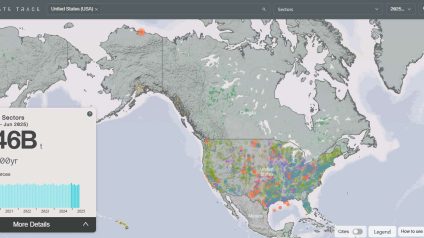Severely underestimated, sand and dust storms are taking a growing toll on public health and economies worldwide, warns the World Meteorological Organization.

Sand and dust storms, an escalating global hazard
Often overlooked and underestimated, sand and dust storms are posing a growing threat to public health and global economies. The warning comes from the latest report by the World Meteorological Organization (WMO), which calls for stronger efforts in monitoring, forecasting, and early warning systems.
Intensifying storms with widespread impacts
According to the 2025 WMO Airborne Dust Bulletin, sand and dust storms affected the lives of 330 million people across 150 countries, contributing to premature deaths and severe health problems. The economic toll is also rising fast.
“Sand and dust storms are not just about dirty windows and hazy skies. They harm the health and quality of life of millions and cause multimillion-dollar losses, disrupting air and ground transport, agriculture, and solar energy production,” said WMO Secretary-General Celeste Saulo.
Nearly 2 billion metric tons of sand and dust enter the atmosphere every year, equivalent to 307 Great Pyramids of Giza. Over 80% of this dust originates from the deserts of North Africa and the Middle East, traveling hundreds or even thousands of miles across continents and oceans.
“A storm in the Sahara can darken skies in Europe. One in Central Asia can worsen air quality in China. The atmosphere knows no borders,” explained Sara Basart, WMO science officer. While largely driven by natural processes, poor water management, drought, and environmental degradation are worsening the problem.
Health effects of sand and dust exposure
Fine dust particles exacerbate cardiovascular disease. The UN estimates 7 million premature deaths occur each year, mainly among vulnerable populations. Philémon Yang, President of the UN General Assembly, described the human toll as “staggering.”
A new index developed by WMO and the World Health Organization found that between 2018 and 2022, nearly half the global population, about 3.8 billion people, were exposed to dust levels above safe thresholds. That marks a 31% increase from the 2.9 billion people affected between 2003 and 2007.
Exposure levels vary dramatically: in the most affected areas, people breathe unsafe air for over 87% of days in a five-year period, totaling more than 1,600 days.
Economic consequences: from crops to clean energy
Economically, sand and dust storms can slash agricultural production by up to 20%. In 2024 alone, countries in the Middle East and North Africa lost 2.5% of their regional GDP to dust-related disruptions.
A U.S.-based study, also published in Nature, revealed the often-underestimated financial cost. In 2017, wind and dust erosion in the United States caused losses of $154 billion, four times higher than in 1995.
The research accounts for household costs, crop damage, transportation disruptions, and losses in wind and solar energy production. It also includes healthcare costs related to “valley fever,” an illness caused by inhaling spores of Coccidioides fungi. The true economic cost is likely even higher but remains difficult to estimate due to limited data and complex contributing factors.
Global dust pathways: where it comes from and where it lands
In 2024, dust concentrations were below average in many source regions but above average in downwind areas. The most vulnerable regions to long-range dust transport include:
- the Atlantic Ocean corridor between West Africa and the Caribbean
- South America
- the Mediterranean Sea
- the Arabian Sea
- the Bay of Bengal
- central and eastern China
That year, dust from Western Sahara reached Spain’s Canary Islands. Meanwhile, strong winds and drought in Mongolia carried dust across northern China, including Beijing.
Global cooperation is the only path forward
WMO is urging increased investment in early warning systems and data monitoring. “No country, no matter how prepared, can tackle this threat alone. Sand and dust storms are a cross-border hazard requiring coordinated, multisector, and multilateral action,” said Rola Dashti, co-chair of the UN Coalition on Combating Sand and Dust Storms.
The decade 2025–2034 has been declared the Decade for Combating Sand and Dust Storms, with hopes of driving global collaboration and systemic change.













